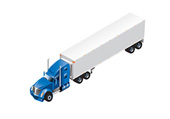Licence classes and combinations
The Driver’s Licence Classification Chart, shows you what class of licence you need to drive different vehicles.
A driver may hold a class A, B, C, D, E, F, G, G1, G2, M, M with L condition, M1, M2, or M2 with L condition driver’s licence, or combination. A full class G licence is required to apply for a Class A, B, C, D, E or F licence. A novice driver may not hold a classified licence or a driving instructor’s licence.
There are several possible combinations of licences. For example, you can hold a class A and B if you meet the requirements for both. Your licence designation in this case would be shown as AB.
Any class or combination of licence classes from G to A may be combined with a class M licence authorizing the operation of motorcycles if you meet the requirements for class M. The combinations AM, EM, ABM and so on are other examples of combinations.
A driver may also hold a class G, E, or F licence with an RV endorsement (T), or a Class D licence with RV restriction (Q).
Driver's Licence Classification chart
Class A
- Allowed to drive any tractor-trailer combination
- May also drive vehicle in class D and G

Class B
- Allowed to drive any school purposes bus
- May also drive vehicle in class C, D, E, F and G

Class C
- Allowed to drive any regular bus
- May also drive vehicles in class D, F and G.

Class D
- Allowed to drive a motor vehicle exceeding 11,000 kilograms gross weight or registered gross weight or any truck or combination provided the towed vehicle is not over 4,600 kilograms
- May also drive vehicle in class G.
Class D with RV restriction (Q)
- Allowed to drive a recreational vehicle, including those exceeding 14,000 kilograms
- May not drive other vehicles in class D.
- May also drive vehicle in class G.

Class E
- Allowed to drive any school purposes bus - maximum of 24-passenger capacity
- May also drive vehicle in class F and G

Class F
- Allowed to drive any regular bus - maximum of 24-passenger capacity - and ambulances
- May also drive vehicle in class G

Class G
- Allowed to drive any car, van, recreational vehicle, small truck or combination of vehicle and towed vehicle up to 11,000 kilograms, provided the towed vehicle is not over 4,600 kilograms. A pickup truck towing a house trailer exceeds 4,600 kilograms but the total combined weight of the truck and trailer does not exceed 11,000 kilograms is deemed a Class G.

Class G1
- Level One of graduated licensing. Holders may drive Class G vehicles with an accompanying fully licensed driver with at least four years’ driving experience. Subject to certain conditions.
Class G2
- Level Two of graduated licensing. Holders may drive Class G vehicles without accompanying driver but are subject to certain conditions.
Class M
- Allowed to drive any motorcycles, including motor tricycles, limited-speed motorcycles (motor scooters) and motor-assisted bicycles (mopeds). Holders may also drive a Class G vehicle under the conditions that apply to a Class G1 licence holder.

Class M1
- Level One of graduated licensing for motorcycles, including motor tricycles, limited-speed motorcycles (motor scooters) and motor-assisted bicycles (mopeds). Holders may drive a motorcycle under certain conditions.
Class M2
- Level Two of graduated licensing for motorcycles, including motor tricycles, limited-speed motorcycles (motor scooters) and motor-assisted bicycles (mopeds). Holders may drive a motorcycle but only with a zero blood-alcohol level. Holders may also drive a Class G vehicle under the conditions that apply to a Class G1 licence holder.
Class M with L condition
- Holders may operate a limited-speed motorcycle or moped only.
Class M2 with L condition
- Holders may operate a limited-speed motorcycle or moped only.

Class M with M condition
- Holders may operate a motor tricycle only.
Class M2 with M condition
- Holders may operate a motor tricycle only.

Notes:
An RV (T) endorsement allows drivers with a Class E, F or G license to operate a recreational vehicle weighing more than 11,000 and up to 14,000 kilograms.
A "Z" air brake endorsement is required on a driver's licence to operate any air brake equipped motor vehicle.
Medical requirements for classified licences
When applying for a class A, B, C, D, E or F licence, you must provide a completed ministry medical certificate. You can get blank medical forms from any DriveTest Centre in Ontario. A licence will be refused if your physical or medical condition does not meet the standards outlined in the regulations of the Highway Traffic Act.
Drivers under the age of 46 must submit a medical report every five years. Drivers aged 46 to 64 must submit a medical report every three years. Drivers aged 65 and older are required to submit a medical report every year.
If your licence is conditional on wearing corrective lenses, do not drive without wearing them. Your medical practitioner or optometrist is required by law to report to the licensing authorities any health problems that might affect your safe operation of a motor vehicle.
Summary
By the end of this section, you should know:
- The different licence classifications and what they permit
- The medical requirements you must meet to maintain a bus driver’s licence